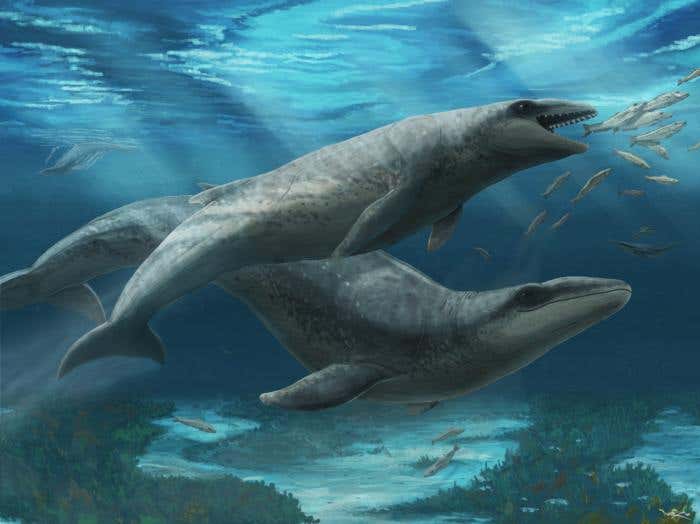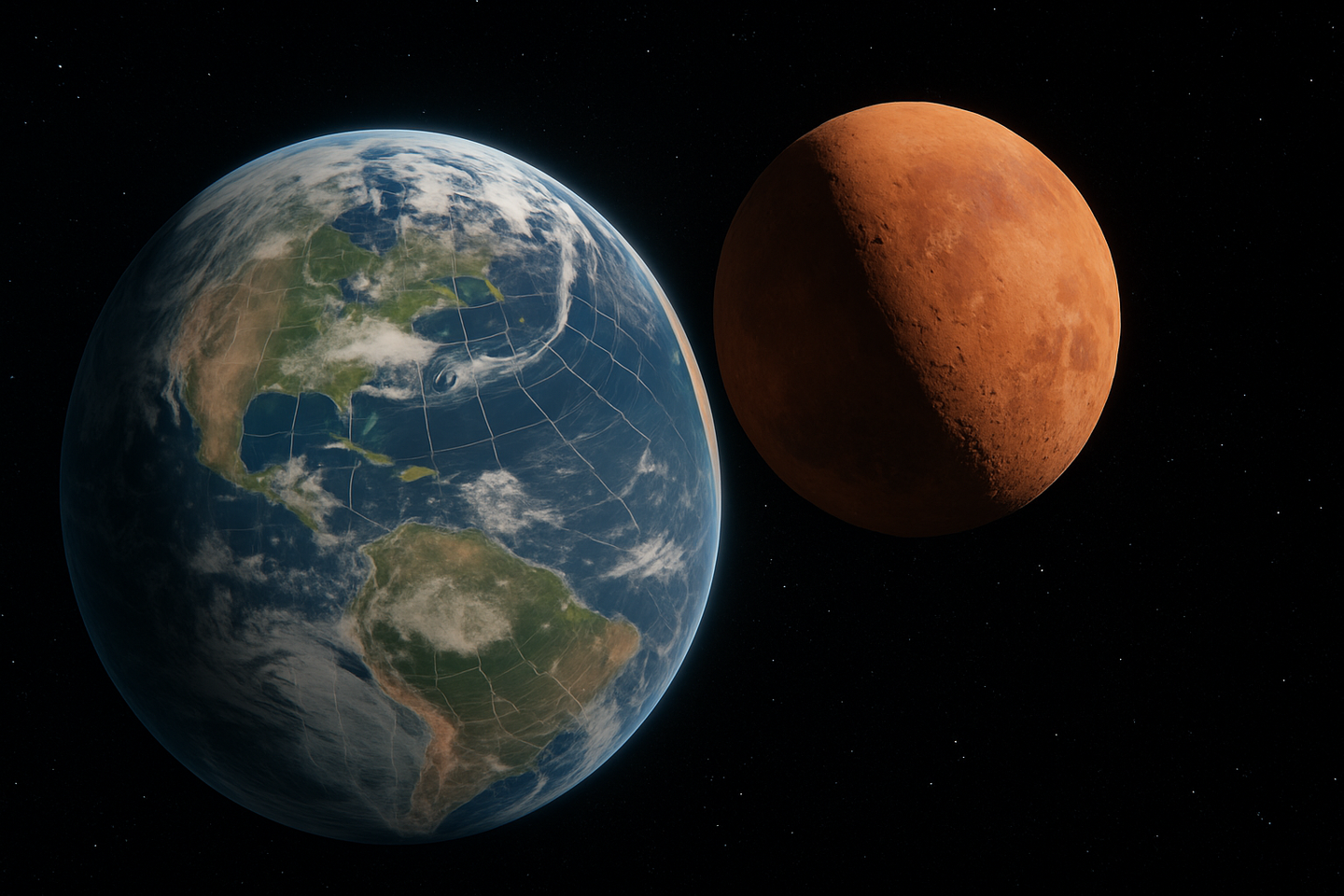New species of ancient predator whale discovered in Australia
Long before the ocean’s largest filter-feeders roamed the seas, their smaller, sharper cousins ruled the warm shallows.

Janjucetus dullardi calf and mother. (CREDIT: Ruairidh Duncan. Source – Museums Victoria)
Long before the ocean’s largest filter-feeders roamed the seas, their smaller, sharper cousins ruled the warm shallows. One such predator, newly named Janjucetus dullardi, offers a striking glimpse into the early days of whale evolution. With big forward-facing eyes, a short snout, and razor-sharp teeth, this two-meter-long hunter looked nothing like the gentle giants you know today, yet it is one of their earliest relatives.
The 26-million-year-old fossil was unearthed along Victoria’s Surf Coast on Wadawurrung Country, near Jan Juc. Local resident Ross Dullard stumbled across the partial skull while walking the beach in June 2019. Realizing it might be special, he donated it to Museums Victoria, where paleontologists carefully prepared the specimen for study. In recognition of his role, the new species now carries his name.
A Small but Formidable Hunter
Though it was about the size of a dolphin, Janjucetus dullardi was built for speed and precision. It belonged to a group known as mammalodontids, early whales that swam Earth’s seas only during the Oligocene Epoch, around 30 to 23 million years ago. Unlike today’s baleen whales, which use fringed plates to filter krill and plankton, this little predator relied on slicing teeth and keen eyesight to catch its prey.
“It’s essentially a little whale with big eyes and a mouth full of sharp, slicing teeth,” said Ruairidh Duncan, a PhD student at the Museums Victoria Research Institute and Monash University, who led the study. “Imagine the shark-like version of a baleen whale – small and deceptively cute, but definitely not harmless.”
Published in the Zoological Journal of the Linnean Society, the research describes the fossil as a juvenile, or “baby whale.” It is the third mammalodontid species found in Victoria and only the fourth known worldwide. Remarkably, it is the first to preserve both teeth and detailed inner ear structures, giving scientists rare clues about how these early whales hunted, heard, and navigated.
Listening to the Past
Using high-resolution microCT scanning, researchers explored the delicate inner ear anatomy, including the cochlea, which plays a critical role in hearing. This detailed preservation allows scientists to study how Janjucetus dullardi might have detected sounds and sensed its surroundings while pursuing prey.
Related Stories
- Wild killer whales spotted sharing their food with humans in multiple acts of kindness
- Whale bone tools from 20,000 years ago expose ancient coastal life
“This fossil opens a window into how ancient whales grew and changed, and how evolution shaped their bodies as they adapted to life in the sea,” said Dr. Erich Fitzgerald, senior curator of vertebrate paleontology at Museums Victoria and senior author of the study.
The skull came from the Jan Juc Formation, a fossil-rich deposit dating back to a period of global warmth and rising sea levels. At that time, the area’s coastal waters supported a rich and diverse ecosystem, making it a prime hunting ground for predators like Janjucetus dullardi.
A Hotspot for Whale Evolution
This part of Victoria is gaining international recognition as a key location for understanding whale evolution. Fossils from the region reveal an era when early whales were experimenting with different body shapes, hunting strategies, and feeding methods.
“Ross’ discovery has unlocked an entire chapter of whale evolution we’ve never seen before,” said Fitzgerald. “It’s a reminder that world-changing fossils can be found in your own backyard.”
Museums Victoria continues to study new finds from the coast as well as older, unexamined specimens from its collection. Each discovery adds another piece to the puzzle of how whales transitioned from toothy predators to today’s baleen-bearing giants.
For Lynley Crosswell, CEO and Director of Museums Victoria, this fossil is more than just a relic. “The findings demonstrate the power of our collections to unlock stories that change the way we understand life on Earth,” she said. “Thanks to the generosity of the public and the expertise of our scientists, Museums Victoria Research Institute is making globally significant contributions to evolutionary research. Discoveries like Janjucetus dullardi remind us that our collections are not just about the past – they’re shaping the future of science.”
Past Studies and Findings
Previous research on mammalodontids has painted them as short-lived but significant players in whale history. Fossils from Victoria have revealed two other species from the same group, showing that Australia’s southern coasts once supported a variety of small-toothed whale predators.
Globally, only one other mammalodon has been documented, highlighting how rare these fossils are. Studies of related species have shown a mix of traits from both ancient land-dwelling mammals and modern whales, underscoring their transitional role in evolution.
Practical Implications of the Research
By studying how ancient whales adapted to warmer oceans millions of years ago, scientists can better understand how today’s marine life might respond to modern climate change. The discovery also provides a rare glimpse into a stage of whale evolution not well-represented in the fossil record, offering a more complete picture of how filter-feeding giants developed from sharp-toothed hunters.
Beyond its scientific value, the find highlights the importance of community involvement in paleontology — a single fossil spotted by a beachgoer can change what we know about Earth’s history.
Note: The article above provided above by The Brighter Side of News.
Like these kind of feel good stories? Get The Brighter Side of News' newsletter.



